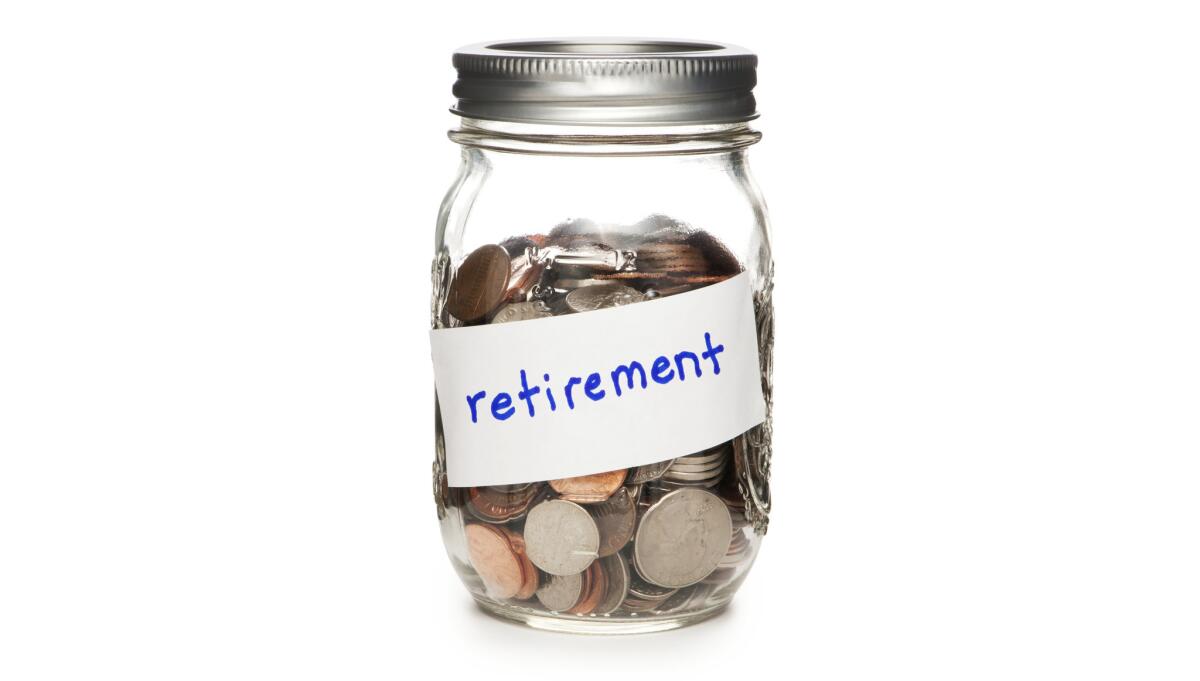If you’re putting money in a 401(k) and an IRA at the same time, be ready for the taxes

- Share via
Dear Liz: I recently returned to a regular 9-to-5 job after freelancing for several years. I contributed the maximum amount to an IRA while self-employed and continued to do so after starting my new job. I was surprised to learn when doing my taxes this year that I could not deduct my IRA contributions because I was also contributing to my company’s 401(k) plan.
Other than increase my 401(k) contributions at the expense of future IRA funding, are there any actions I can take?
Answer: The ability to deduct IRA contributions when contributing to a workplace retirement plan phases out once your modified adjusted gross income reaches certain limits. For single filers, the deduction starts to phase out at $63,000 and disappears at $73,000. For married couples filing jointly, the phase-out is from $101,000 to $121,000.
Your next move depends on your goals and situation. If you’re primarily concerned with reducing your current tax bill and you’re likely to be in a lower tax bracket in retirement, as most people will, then you should funnel more money into your 401(k) rather than funding your IRA.
If, however, you expect to be in the same or higher bracket in retirement, or if you want more flexibility to control your tax bill in your later years, consider contributing to a Roth IRA in addition to your 401(k). Roths don’t offer an up-front deduction, but withdrawals in retirement are tax free. Also, unlike 401(k)s and traditional IRAs, there are no minimum required withdrawals in retirement.
There are income limits on the ability to contribute to a Roth IRA. For single people, the ability to contribute phases out between modified adjusted gross incomes of $120,000 to $135,000 in 2018. For married couples filing jointly, the phase-out is between $189,000 and $199,000.
The idea here is not to cheat public servants
Dear Liz: Thanks for your column about Social Security claiming strategies. Here’s a further complication you didn’t address. If the surviving spouse is a teacher in many states, access to survivor’s Social Security benefits is further restricted (if not entirely blocked) by a misogynistic, anti-teacher ruling dubbed the windfall elimination provision, which perhaps was a backlash against the women’s liberation movement of the 1970s and 1980s.
Any clarification on the windfall elimination provision’s inconsistent application and its impact on my widow’s fixed income will be greatly appreciated.
Answer: The explanation is actually a lot more prosaic.
The windfall elimination provision and a related measure, the government pension offset, were not designed to rob public servants of benefits other people get. Instead, the provisions were meant to keep those who get government pensions from getting significantly bigger benefits than people in the private sector.
The provision that would reduce and possibly eliminate your spouse’s survivor benefit is actually the government pension offset. The offset, like the windfall elimination provision, applies to people who get pensions from jobs that didn’t pay into the Social Security system. (Some school systems, as well as other state and local government employers, have opted out of Social Security and provide their own pensions instead.)
If both you and your spouse had only Social Security and no government pensions, one of your two Social Security checks would stop at your death. After that, your spouse would get one check — the larger of the two checks the household received — as a survivor benefit.
If the government pension offset didn’t exist, your widow could receive two checks: a survivor benefit equal to your Social Security benefit, plus her pension. She potentially would be getting a lot more from Social Security than those who paid into Social Security their entire working lives.
The windfall elimination provision, meanwhile, applies to people who have government pensions but also worked in jobs that paid into Social Security.
When people don’t pay into the system for several years because they have jobs with government pensions instead, their annual Social Security earnings for those years are reported as zero. Because Social Security is based on workers’ 35 highest-earning years, those zeros make it look like they have lower lifetime earnings than they actually did.
That’s a problem because the Social Security system is progressive, replacing more income for lower-earning workers than for higher-earning ones. Without adjustments, people with pensions would look like lower earners than they actually were. They would wind up with bigger Social Security checks than someone who had the same income in a private-sector job that paid in a lot more in Social Security taxes.
These provisions are complicated and hard to explain, which is part of the reason some people jump to the conclusion they’re being denied something others are getting. In reality, the provisions were meant to make the system more fair.
Liz Weston, certified financial planner, is a personal finance columnist for NerdWallet. Questions may be sent to her at 3940 Laurel Canyon, No. 238, Studio City, CA 91604, or by using the “Contact” form at asklizweston.com. Distributed by No More Red Inc.
More to Read
Inside the business of entertainment
The Wide Shot brings you news, analysis and insights on everything from streaming wars to production — and what it all means for the future.
You may occasionally receive promotional content from the Los Angeles Times.










